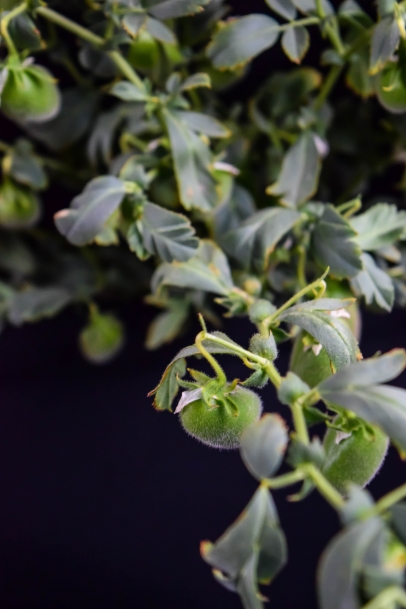THE PULSE OF THE PALOUSE: 13 Foods brings frozen legumes to the national market
Marty Anderson bent down and tugged at a tuft of wispy greens, freeing its long root from the rich volcanic soil that blankets the Palouse region of northern Idaho.
“These nodules are full of nitrogen,” he said, turning the lentil plant over in his weathered hand. “Raising lentils here will provide 30% of what’s needed for the next wheat crop, so the farmer doesn’t have to use as much nitrogen for his next crop.”
Legumes make great cover crops because they fix nitrogen from the air and infuse it back into the ground, which improves soil fertility. Some varieties can also free soil-bound phosphorus, which plays an important role in plant nutrition. In fact, Chef Dan Barber praises legumes in his book The Third Plate, which advocates devouring nutrient-rich cover crops with as much gusto as more traditional crops like wheat.
But lentils aren’t just a cover crop in northern Idaho. The Palouse grows 18% of the nation’s lentils and even hosts the National Lentil Festival every August to celebrate the little legume, complete with cooking demos and the world’s largest bowl of lentil chili. As it turns out, the area’s rolling hills, warm days and cool nights provide ideal growing conditions for lentils, which don’t require fertilizer or irrigation to thrive.
“The chickpeas and lentils love the hillsides, which the Palouse area is known for,” said Linda Anderson, Marty’s wife and VP of 13 Foods. “They like that slope where the air comes wafting through and keeps the moisture in the soil but dry on the leaves.”
Lentils and chickpeas belong to a subcategory of legumes known as pulses, which have dry, edible seeds and low fat content. The United Nations General Assembly declared 2016 the International Year of Pulses, recognizing that they’re an inexpensive source of plant-based protein, vitamins and minerals for people around the world.
Though 95% of the lentils grown in the Palouse are exported overseas, Linda said 13 Foods is working to change that. The Idaho company offers a unique product that appeals to time-conscious modern american cooks: cooked and flash-frozen legumes.
“People are very busy and we know that some of the pulses take a long time to cook in the dry state. … We thought, ‘Is there another way that we can bring this to the consumer that has fresher taste and has less additives to it?’ As we explored that, the frozen angle seemed to resonate with us,” Linda said.
13 Foods offers four frozen bean options: Pardina Lentils, Rojo Petite Red Beans, Tortuga Black Beans and Kabuli Petite Chickpeas. The beans contain no added sodium or preservatives, which Linda says gives consumers more options in the kitchen.
“It can go into a salad, it can go into a a chilli, it can go into an omelet, a scramble, a casserole,” she said. “It can be used just as a handful additive or you can use the whole bag.”
In addition to sprinkling chickpeas on pork chops while they’re braising, Linda recommends tossing a handful into the blender with frozen fruit, lemon juice and coconut oil for a protein-packed smoothie. She also likes to marinate frozen beans in salad dressing until they thaw and soak up some of the tart vinegar flavor.
“I use them on appetizers—just bruschetta with some arugula on top, a dollop of marinated beans and a shaving of parmesan,” she said “You’ve got something that’s ready to use right there, quick and easy. And it makes it look like you went to a lot of effort.”
And while pulses still aren’t a staple in most American diets, Nielsen data shows that sales of some specific varieties are growing: Lentil sales rose 11.1% and chickpea sales grew 6.4% over the last year. Nielsen suggests that this increased demand correlates with a desire among americans to eat simpler, healthier foods that are packed with protein and fiber.
“As the Nielsen data points out, the consumer’s desire for a healthy lifestyle has caused a search for answers which are readily and easily available today,” said linda, adding, “I think we’re just starting to burst out in awareness that not only are pulses healthy, but they’re tasty.”






